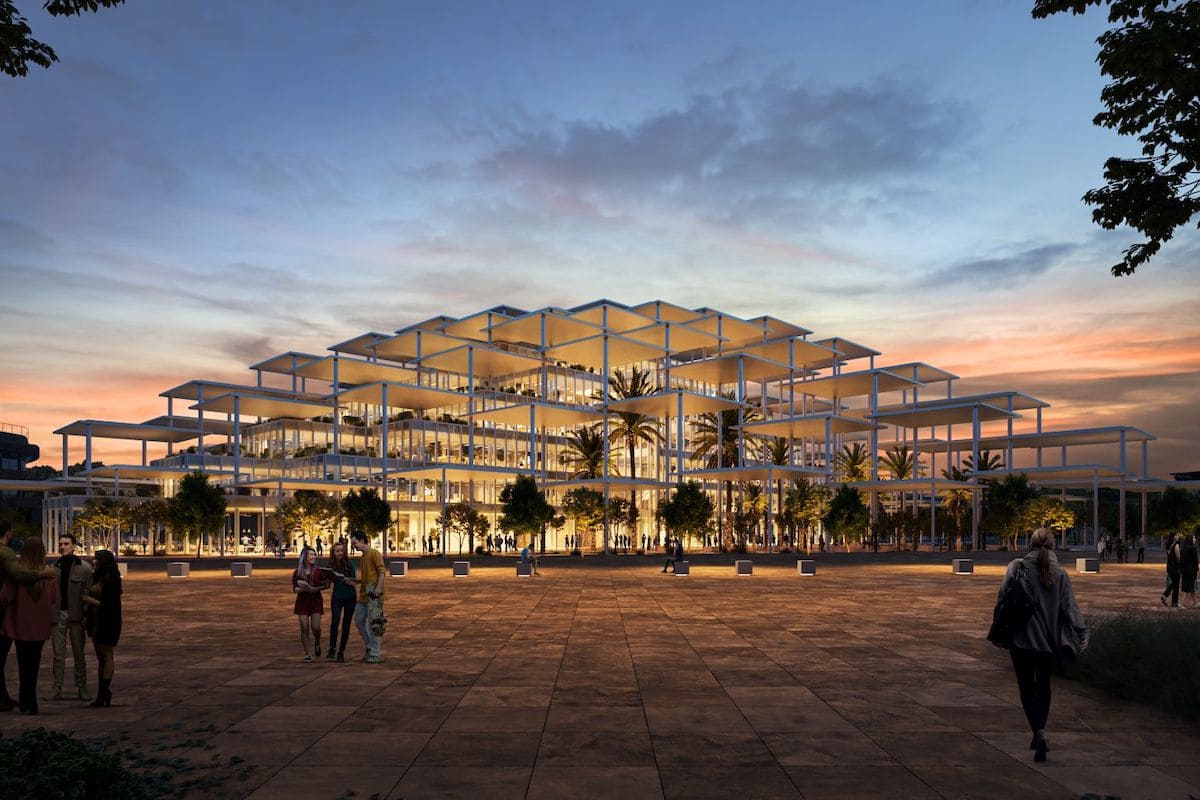
On June 30, 2025, construction officially began on the European Commission’s first-ever building with net positive emissions. Located in Seville, Spain, the facility goes far beyond the concept of net zero. Not only will it minimize its carbon footprint, it is designed to offset additional CO₂ emissions, becoming a positive force for the environment.
The honor of this groundbreaking milestone belongs to the Joint Research Centre (JRC), which will be housed in the new building.
Beyond net zero: the European Commission raises the bar
Designed by the renowned architectural firm Bjarke Ingels Group (BIG), the structure will fully embrace the values of the New European Bauhaus initiative. It stands as a symbol of environmental sustainability and architectural innovation for the European Union.
So what will make the new JRC center the first positive-emission building ever developed by the Commission?
One of the key strategies is the integration of large-scale solar energy production. The building will generate far more energy than it consumes, thanks to an expansive photovoltaic system. Passive architectural design will further optimize energy use and minimize demand.
A solar-powered European lab rooted in Andalusian tradition
Inspired by Seville’s architectural heritage, the building will feature a massive photovoltaic dome that shades not only the facility itself but also an adjoining public square and garden. The spatial layout is built for long-term adaptability, ensuring it can evolve with future needs.
As explained by the architects at BIG, the JRC’s positive-emission headquarters draws from Andalusian plazas and the traditional Seville pergola. The final design is a “forest of columns” supporting a “cloud of pergolas” equipped to hold over 9,000 solar panels.
Equally important is the project’s focus on material sustainability. Local resources such as limestone, wood, and ceramic will be prioritized in construction.
The building is expected to be completed within two years.